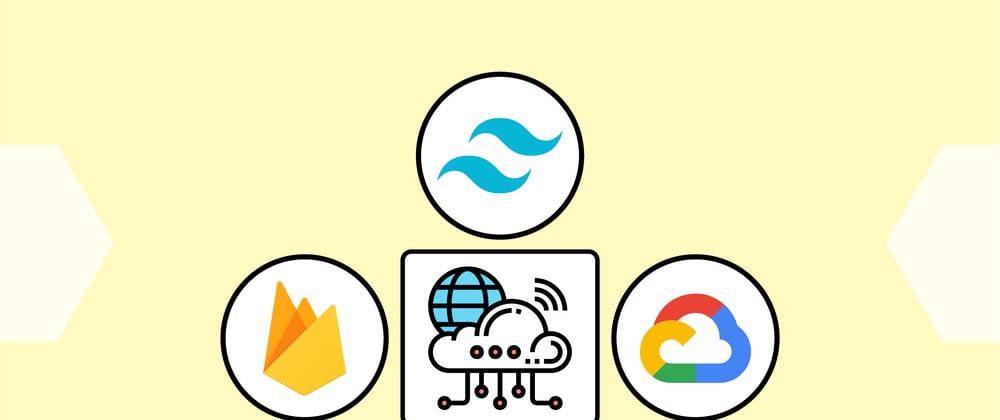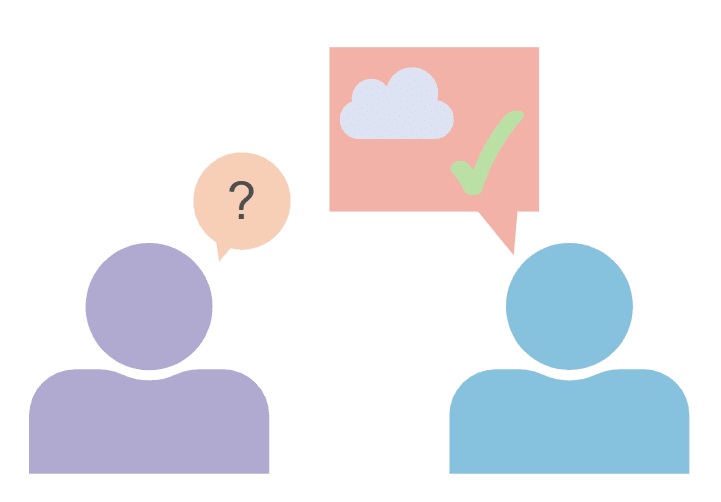Cloud-native technologies have become an important part of modern software development. The cloud-native architecture allows us to handle sudden surges in demand in an organized and efficient way through the use of containers, microservices, DevOps, and APIs. With cloud jobs in such high demand, you can help set yourself apart from the competition by developing strong cloud skills.
In this article, we’ll explore the term cloud-native and discuss the benefits of cloud-native architecture, how to build a cloud-native application, and what to know for your cloud interviews.
Let’s get started!
We'll cover:
- What is cloud native?
- Cloud-native vs. traditional applications
- How to build a cloud-native application
- What to know for a cloud-native interview
- Wrapping up and next steps
Get hands-on with cloud native app development
This interactive course will help you walk you through the journey to creating your first cloud-native web application.
Cloud Native Development with Tailwind, Google Cloud, and Firebase
What is cloud native?
Cloud-native is an approach to application development that uses the cloud computing delivery model. Cloud-native development was designed to enhance modern application development by employing the scalability, resiliency, and flexibility that the cloud provides.
As defined by the Cloud Native Computing Foundation (CNCF), “cloud-native technologies empower organizations to build and run scalable applications in modern, dynamic environments such as public, private, and hybrid clouds.”
Note: The CNCF was created by the Linux Foundation in 2015. It’s an open-source software foundation that promotes cloud-native technologies. Companies like Microsoft, Oracle, and Intel are members of the foundation. They support open-source projects such as Kubernetes, Envoy, and many more.
Cloud-native app development leverages things like containerization, service meshes, declarative APIs, and microservices to allow you to build, deploy, and manage high-impact cloud-native applications. Cloud-native services use technologies such as Docker, Kafka, Kubernetes, and serverless functions to help you efficiently build and run scalable applications in private and public cloud environments.
Cloud-native architecture
Cloud-native architecture focuses on designing apps or services that were made to exist in the cloud rather than on-premises infrastructure. The cloud-native architecture enables us to create and deploy applications that are easy to maintain and have flexibility without relying on physical servers.
Microservices and serverless functions are very important in cloud-native architectures. Microservices are one of the main parts of cloud-native app architecture. Many companies use them because they support DevOps, improve scalability, reduce costs, and enable flexibility.
Microservices and containerization support cloud-native apps by enabling us to switch between cloud providers, deploy services independently, and deploy services in different languages or frameworks without issues. There are many benefits to implementing a cloud-native architecture into your application development process. Let’s take a look at some of the benefits and challenges:
Benefits
- Continuous integration: Microservices help us with continuous integration and continuous delivery efforts because the development lifecycle is reduced and more processes are automated.
- Container orchestration: Container orchestrators can schedule and allocate resources based on user needs. Open-source container orchestration platforms help us identify bugs in specific containers so we can find the root of the problem instead of affecting the entire application.
- Portability: Containerized microservices are very portable, which means we don’t need to rely too much on one specific cloud provider.
- Reduced downtime: Container orchestrators help us deploy software updates with less downtime.
- Fast development time: Cloud native architecture helps us speed up the app development process for organizations that have compute resources spread across different environments. This also allows us to get more value from the hybrid cloud.
Challenges
- Lack of DevOps: If your organization doesn’t establish a DevOps pipeline, it may be difficult to manage the distributed workflows and microservices within your application.
- Microservices: Certain microservices are dependent on specific types of operating systems, so make sure to consider that before moving forward.
- Dependencies: If you transition from a traditional application to a cloud-native application, dependencies and interdependencies may arise.
Cloud-native vs traditional applications
Traditional apps are basic apps that run on a mainframe environment or that have a client/server environment. Cloud-native apps implement the cloud computing delivery model to improve the app development process.
Let’s take a look at some of the main differences between cloud-native apps and traditional apps:
Cloud native
- Predictable: Cloud-native apps follow a framework that helps optimize resiliency through predictable actions. Cloud platforms use an automated, container-driven infrastructure that drives the way we write our software.
- Collaborative: Since cloud-native architecture uses DevOps, the app development process is more streamlined.
- Practical capacity: Cloud-native app development automates infrastructure provisioning, which helps allocate the appropriate resources at the time of deployment.
- Independent: The microservices architecture breaks apps into smaller services. This makes it easier to perform updates and scale the services without affecting other aspects of the application.
- Continuous delivery: Individual updates can be released as soon as they’re ready.
- Operating system abstraction: The cloud-native architecture allows us to break away from underlying infrastructure dependencies and focus on the software.
Traditional
- Not predictable: Traditional apps are developed in specific ways, and they don’t use the benefits of the cloud computing delivery model. This means that traditional apps may take longer to build, and they may have more infrequent releases.
- Isolated: Traditional app development doesn’t use DevOps, so there’s typically less collaboration between different teams.
- Large capacity: Custom infrastructure solutions may delay app deployment due to their oversized capacity.
- Dependent: The monolithic architectures bundle services into single packages, which causes dependencies between services. This can affect updates and scaling.
- Delayed delivery: Updates may be delayed, which affects the performance of the application.
- Operating system dependency: Traditional app development typically involves dependencies between the application itself and its underlying operating system.
Keep the learning going.
Learn about cloud native app development without scrubbing through videos or documentation. Educative’s text-based courses are easy to skim and feature live coding environments, making learning quick and efficient.
Cloud Native Development with Tailwind, Google Cloud, and Firebase
How to build a cloud-native application
There are many different tools and practices we can use when building and operating cloud-native applications. Let’s take a look at some of the fundamentals:
DevOps
DevOps is a combination of philosophies, practices, and tools that increases an organization’s ability to deliver apps and services quickly and efficiently. DevOps allows us to fully use the native cloud capabilities and ensures that dev and operations teams work together with regular communication and common goals. With DevOps, our software development processes and more consistent and efficient.
Microservices
Microservices architecture involves developing applications as collections of smaller services. Each microservice can be manipulated independently of other services within the same application. This enables a more streamlined application development lifecycle without negatively impacting users.
Continuous delivery
Continuous delivery is made possible by Agile development practices. It means that we constantly make phased software changes through automation. It’s a very reliable way to release and deliver software more frequently and safely.
APIs
Since cloud-native applications rely heavily on microservices, we need a well-defined way for these separate services to communicate with each other. This is where APIs come in. Application programming interfaces (APIs) connect products and services and allow them to easily communicate so we can maximize the development process.
Containerization
Using containers gives us more efficiency and speed compared to traditional virtual machines. With containerization, a single operating system instance is divided across one or more containers, which allows us to create and deploy individual microservices.
What to know for a cloud-native interview
If you want to work in the cloud space, it’s important to know about cloud-native application development. Let’s discuss some fundamental information you should know and useful things you can do before your cloud-related interview:
Cloud computing
Your expected skills and knowledge will depend a lot on the position you’re interviewing for. Overall, you still need to have a solid understanding of the fundamentals of cloud computing. Make sure you have the knowledge to answer basic questions about the cloud.
Your preparation and study topics will depend on the position you’re applying for. Make sure to brush up on the relevant ideas and technologies that pertain to the job you want. It’s also important that you demonstrate that you have some hands-on experience with cloud computing. If you don’t have experience, you should have a solid understanding of the concepts and be able to explain them at a higher level.
Cloud certification
A cloud certification shows potential employers that you have a solid understanding of the fundamentals of cloud computing. Over 80% of hiring managers say that cloud certifications make applicants more desirable. The most popular certifications on the market now are for AWS, Azure, and GCP. Regardless of the certification you choose, multi-cloud skills are in high demand, so you’ll have room to move around.
DevOps
DevOps is a strategy to help speed up application development by allowing operation feedback to come right to the developers. This means that cloud engineers follow their app throughout its entire lifecycle. For interviews, prepare to answer questions about things like disaster control, feedback, and automated data management.
Soft skills
Don’t forget the soft skills! Now more than ever, tech companies are looking for well-rounded candidates with technical skills and soft skills. Make sure to highlight experiences that demonstrate your flexibility, adaptability, communication skills, and your customer service mentality.
Wrapping up and next steps
Congrats on taking your first step with cloud-native applications! Cloud-native development is growing in popularity, so it’s an important thing to know for a career in software development. There’s still so much more to learn about cloud-native app development, such as:
- Setting up a continuous deployment pipeline
- Feature toggles
- Monorepo
Getting hands-on experience with cloud-native applications is a great way to demonstrate to potential employers that you have the relevant skills and experience with the cloud. To start learning about the listed concepts and a lot more, check out Educative’s course CloudNative Development with Tailwind, Google Cloud, and Firebase. In this curated course, you’ll get hands-on experience in developing, testing, and managing a complete cloud-native application.
By the end of the course, you’ll have the foundational knowledge you need to develop cloud-native applications on your own or with your team. You’ll also have great experience to talk about in your next interview!
Happy learning!









Latest comments (0)